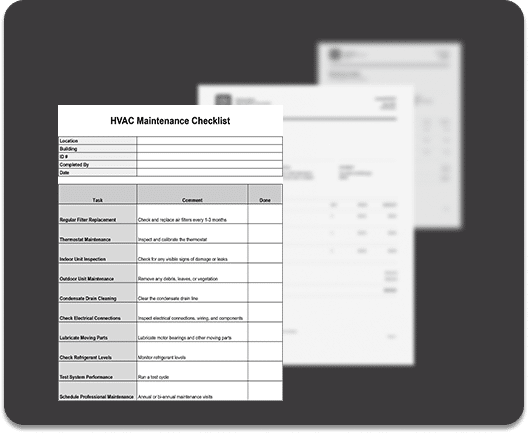What does the halo effect look like at work? Why is it problematic? How can competencies help you overcome the halo effect in the workplace?
Successful, likable celebrities are seen as intelligent, kind, and funny, too. You see an attractive person and think, “he’s nice” or “she’s smart” – without ever meeting them. A teacher expects that a well-behaved student is also bright and motivated – before evaluating that student’s capabilities in those areas.
These are all examples of the common “halo effect” phenomenon. Also referred to as the halo error, the halo effect is a type of cognitive bias where someone forms a positive impression of a person’s character, skillset, and other traits based on their perception of a single trait. As described in this Simply Psychology article, “It can shape our perception of others’ intelligence and competence, and its influence can be seen in many settings ranging from the classroom to the courthouse.”
What does the halo effect look like at work? Why is it problematic? How can competencies help you overcome the halo effect in the workplace?
Why is the Halo Effect Problematic in the Workplace?
It is perfectly natural to make assumptions about others. We do it every day. At work, though, unfounded biases for and against our direct reports and colleagues can, at best, slow important workforce decisions. But at their worst, biases can be harmful to individuals, groups, and companies.
To answer workforce questions, you need an accurate understanding of individuals’ skills. Who should we hire? Who should we promote? What is this employee doing well? What skills does that employee need to develop? Is the available training and development working? How well are employees prepared for what’s next?
A skewed view of employees’ skills and competencies will get in the way of answering these important recruitment, workforce development, and talent management questions.
Verywell Mind cautions that, “The halo effect is one of the most common biases affecting performance appraisals and reviews. Supervisors may rate subordinates based on the perception of a single characteristic rather than the whole of their performance and contribution.”
PeopleGoal outlined these negative impacts of bias on performance reviews:
- Rating scales applied arbitrarily
- Inequity reaffirmed, e.g., for women and ethnic minorities
- Constructive feedback hindered
- Employee relations affected negatively
The result is the opposite of what leaders want for their teams and companies. Leaders want to harness the talent of individuals and groups to advance the mission and performance of their company. With the halo effect and other biases, what leaders get instead is confusion, inequality, frustration, and employee disengagement. It’s an understandable and unnecessary outcome.
How to Overcome the Halo Effect
Overcoming the halo effect takes a two-pronged approach.
First, change the tools you’re using to assess employees’ performance, skills, and competencies. Switch to a competency-based approach to hiring, developing, and retaining your workforce. Competencies measure the skills, knowledge, and behaviors of employees. Competency-based tools provide an evidence-backed, data-driven approach to assess workers’ skills and performance now and also support decisions about what to do next to address workforce issues.
Start with skills assessments to measure how well potential and current employees are able to perform the skills that are needed in their jobs. Which job candidates have the skills you need? What skills and competencies do your employees need to strengthen in order to succeed in their jobs?
Make skills assessments a routine part of your culture, so employees and managers can view progress over time. How well are your employees mastering their essential skills? Who is most capable of taking on more responsibility now or in the future?
A competency-based approach generates a rich data set that can reveal individual and group skill inventories and gaps. A competency management system such as Avilar’s WebMentor™ Skills can collect and manage the data – and generate the reports you need to make informed, unbiased decisions today and for years to come.
Second, educate leaders and managers about the halo effect and other biases. The “horn effect,” for example, is the opposite of the halo effect and is described in the same Simply Psychology article as, “The tendency to make an overall unfavorable impression of a person, based on one negative trait.” There’s also “proximity bias,” described in this blog as, “the tendency to treat better those who work in your immediate vicinity.” The blog explains that proximity bias “can be a silent killer of employee engagement and productivity in hybrid and distributed workplaces.”
Teach your leaders and managers about the halo effect, horn effect, proximity bias, and other biases. Help them understand the harmful effects these have on the workforce. As they learn to beat biases such as the halo effect in the workplace, the leadership team will build shared language, experiences, and perspectives to support their important change.
A Halo Effect Example in the Workplace
Harvard Business Review shared a case study (summarized below) on how one organization worked to root out bias from performance reviews. It’s a great example of how the two-pronged approach to overcoming biases can dramatically improve outcomes.
Situation
About two years before the case study was written, a diversity and inclusion (D&I) leader at a midsize U.S. law firm noticed a troubling trend of race and gender bias surfacing in their performance evaluations. Leaders reached out to the Center of WorkLife Law to understand these trends and adopt a more data-driven approach for future reviews.
An assessment of the evaluations identified four basic patterns of racial and gender bias:
- Prove-It Again: “Groups stereotyped as less competent – including women, people of color, individuals with disabilities, older employees, LGBT+, and professionals from blue-collar backgrounds – have to prove themselves over and over again. These groups tend to be judged on their performance – their mistakes are noticed more [frequently] and remembered longer – while the majority white men are judged on their potential.”
- The Tightrope: “A narrower range of workplace behavior is accepted from women and people of color.”
- The Maternal Wall: “Assumptions [surface] that mothers are no longer committed to their work, that they probably shouldn’t be, and that they are less competent.”
- Racial Stereotypes: Overt stereotypes such as “Asian Americans are good at technical tasks but lack leadership ability”, or more subtle stereotypes, such as the assumption that “people of color need to be more willing to sacrifice work-life balance than white men.”
Interventions
Two changes were implemented:
- Changing the Tools: The team reworked the law firm’s performance evaluation form to break job categories down into competencies. They required performance ratings to be backed by at least three pieces of evidence.
- Education: A one-hour workshop was developed to teach everyone about the patterns of bias and how to use the new performance evaluation form.
Results
Authors reported, “One year later, people of color and women got more constructive feedback, and the playing field was leveled for everyone: Whereas white men had longer, more complex evaluations in year one, in year two, both word count and language complexity were similar across all groups. While there was still room for improvement, the intervention showed that evidence-based metrics can help companies make steady progress and improve outcomes for everyone.”
For this law firm, and for many organizations, a competency-driven approach to performance management helped to minimize the negative impact of bias in the workplace. Combatting the halo effect and other biases with competencies can strengthen your recruitment, workforce development, and talent management efforts – so your employees, teams, and company are positioned to thrive.
Interested in introducing skills and competency tools and metrics to your organization? Download our Competency Management Toolkit to see how a competency-based approach to workforce management can overcome biases such as the halo effect in the workplace. Or contact us to find out how Avilar’s WebMentor Skills™ competency management system could help.
RELATED RESOURCES
5 Advantages of a Competency-Based Approach to Solving Workforce Issues
How to Choose the Best Performance Management Software for Your SME
Do Your Leaders Have the Skills Needed to Successfully Manage Teams Remotely?
Skills-Based Talent Management: What is it? Why is it Important?


















